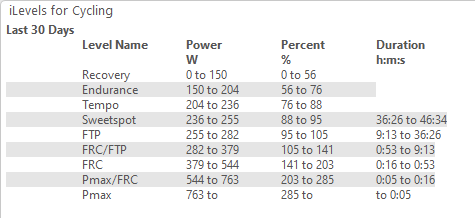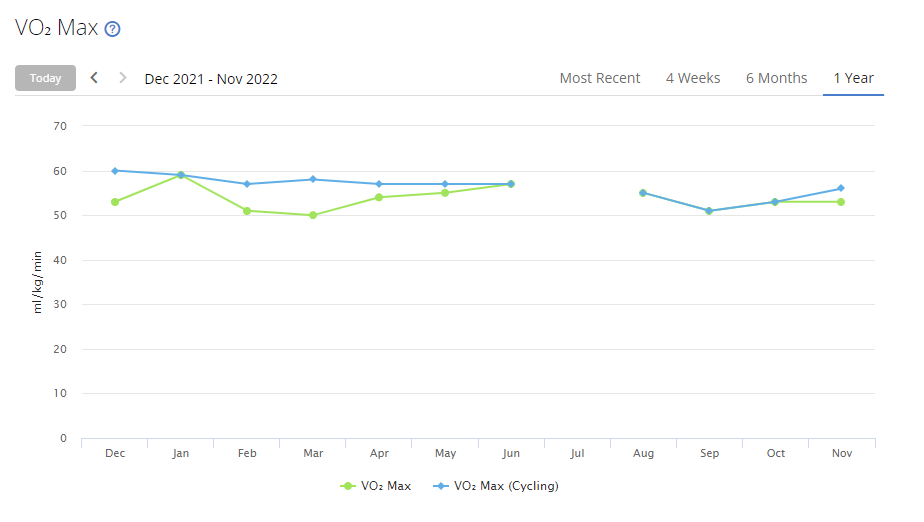After finishing my last triathlon for the year, I did an informal n=1 experiment with (mostly) following the Garmin daily suggested workout feature for a few months. I alternated between running and cycling workouts most days of the week, plus weekly strength training and occasional other random activities. Since I didn't have a specific event to train for, I was just curious to see what would happen.
Results were not very good. Despite putting in about the same number of training hours per week as before this little experiment, my performance metrics including VO2 Max, FTP, and Lactate Threshold Heart Rate all got worse (lower). On the positive side, my Resting Heart Rate reduced by a few beats per minute. There was no significant change in my weight, diet, sleep, or other factors so I'm going to assume the performance decline was due to the change in workouts. My impression is that the suggested workouts generally involved too much base training, which for me doesn't seem very effective.
Yes, I am familiar with the research on polarized and "80/20" training which recommends spending the bulk of time on Zone 2 base training. No doubt those plans work well for many athletes, especially those doing a higher volume of training. Since I have very limited training time, I seem to get better results by doing more higher-intensity workouts and I don't have trouble recovering from those.
I think the main issue with the daily suggested workouts is that they can essentially create a positive feedback loop (in the control systems sense of the term). The duration and intensity of the workouts is keyed off of your current performance metrics plus HRV and sleep. So, if you have a rough few days then the watch will suggest a shorter, lower-intensity workout, which causes your fitness to decline further, and so on in a downward spiral.
This is just my impression as an average age-group triathlete. I am not complaining or asking for any particular product changes. The daily suggested workout feature can be fine within certain limits, and I'll continue using it occasionally, but you have to understand what it's doing and not expect too much.




